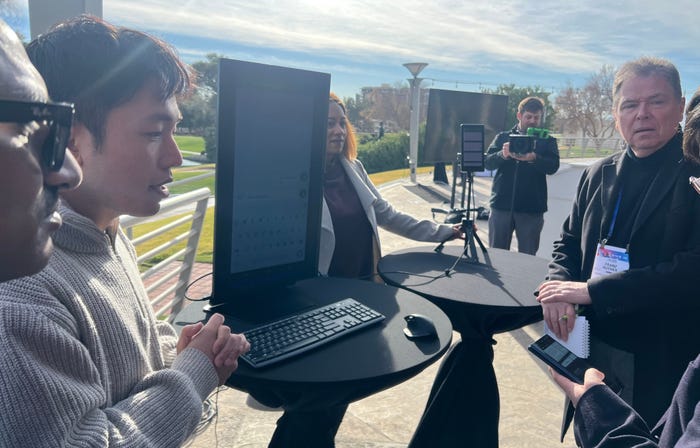Superconductor technology for wireless networksSuperconductor technology for wireless networks
September 1, 1997
The use of superconducting RF filter subsystems in cellular receivers allows reduction of interference from out-of-band sources, enhances sensitivity, increases call clarity and reduces dropped calls.
The receiver subsystem described in this article has been trademarked by Conductus under the name Clearsite.
In 1911 the properties of superconducting materials were first discovered. In 1986, advances in ceramic compounds created the possibility of applying superconducting materials to more commercial applications without the cost and complexity previously required to achieve extremely low temperatures.
New combinations of oxides, with phenomenal properties, continued to display extraordinary possibilities. These new, complex ceramic oxides came to be known as high-temperature superconductors (HTS) because they exhibit superconducting behavior at significantly higher temperatures_where more reliable refrigeration systems are commercially available. Migration of HTS into the commercial arena was just a matter of time.
Conductus turned its experience and successes with laboratory instruments into a newer field_wireless communications infrastructure equipment. Using a yttrium-barium-copper-oxide-based superconductor, we produce HTS components using “thin-film” fabrication approaches similar to those used in the semiconductor industry. Superconducting systems containing many filters can be packaged in a significantly smaller footprint than conventional filters. This is critical to wireless networks concerned with the amount of “real estate” filters require.
The application of HTS materials was found to be extremely beneficial in all “passive” electronic components. The same principal challenge that dominated nuclear magnetic resonance (NMR) (a chemical diagnostic procedure), namely, reducing the loss of RF components and enhancing the signal-to-noise ratio (SNR) performance, could be addressed with the use of HTS.
Superconducting RF filters are far superior to conventional filters in their ability to reject adjacent, out-of-band radio signals. The receiver subsystem we developed demonstrated the ability to reduce interference from out-of-band sources, to enhance reverse-path or uplink sensitivity, to increase call clarity and to reduce dropped calls. In areas such as rural cellular networks, the cost savings resulting from implementing the receiver subsystem to improve coverage have proven to be significant compared with building new cell sites.
Enhanced base station sensitivity, in particular for low-power (0.6W) portable handsets, can be characterized by uplink-sinad (signal-intensity-noise and distortion) measurements. A 1dB reduction in receiver noise floor or figure enhances sinad by 3dB in the fade margin or typical hand-off region_where received signal strength indicator (RSSI) units are in the 2100dBm to 285dBm range, as shown in Figure 1 at the left. As a result, call clarity is enhanced and fewer hand-offs fail. Values of 18dB sinad are considered the minimum desired value for maintaining analog sound quality. As sinad decreases to 12dB and less, calls become filled with “popcorn” or “scratchy” artifacts of low received-signal strength and are typically dropped.
The reduction in interference offered by HTS filters is a result of their higher Q factor. Because these materials exhibit low loss, RF designers can incorporate more resonators or poles into their filter designs. The filter rejection skirt can then be made to roll off much faster than conventional technology, although still providing less in-band insertion loss. HTS filter skirt roll-off performance can exceed 60dB of attenuation only 1MHz away from the band edge. This new benchmark in filter performance is promising for reducing PCS-to-PCS interference as personal communications services acquire subscribers.
In the spring of 1997, beta tests with rural carrier Cellcom, Green Bay, WI, fulfilled HTS projections. Rural markets, by their very nature, have lower revenue streams than dense urban markets. As a result, carriers prefer alternative network solutions that bypass the need to erect more cell sites. It is not cost-effective to put in base stations every 40 miles. Carriers must depend on equipment that extends the range of the transmitted portable handset signal and maintains the integrity of call clarity.
Cellcom participated in the first rural trial of four receiver subsystem beta units. In the period of testing, the primary goal was to determine whether the technology would be able to address the sensitivity issue. A significant reduction in interference would aid the carrier in its battle with numerous interference sources, such as nearby paging base station antennas or signals from competing cellular operators’ subscribers. Cellcom easily integrated the receiver subsystems at the four sites in less than two hours of installation time per site (and with the approval of its network equipment supplier).
The challenges to Cellcom’s network can be primarily traced to the increased use of lower power (0.6W) portable handsets that the network sometimes has difficulty hearing.
The trials showed a marked improvement in both the dropped-call rate and in the call clarity, as qualified by a focus group of key customers in the upgraded territories. The improved quality of serv-ice was the result of a 2dB-4dB reduction in the base station noise floor or noise figure. This reduction in noise floor, when paired with high Q-factor HTS filters, is a significant step toward maximizing the performance of a carrier’s network.
As shown in Figure 2 on page 32, the trials used the system’s on/off ability to test the percentages of dropped calls. Over an eight-week period, the various testing sites produced results with measurable decibel enhancement.
Figure 3 at the left shows the configuration of the receiver subsystem. The use of HTS technology allows designers to evaluate the configuration and relationship of Q factor and noise floor with reduced interference and dropped calls. This knowledge gives designers an edge in their networks. The combined receiver and cryogenic refrigeration system is designed for five years of maintenance-free operation. These systems can be wall- or rack-mounted in the equipment room or mounted on the tower, as with tower-mounted amplifiers.
The combined advantage of superconducting systems is that they maximize coverage of existing infrastructure by increasing base station sensitivity, and they enhance receive isolation, protecting the network from out-of-band competing wireless services. These combined features offer operators a cost-effective means to enhance network quality of service.



